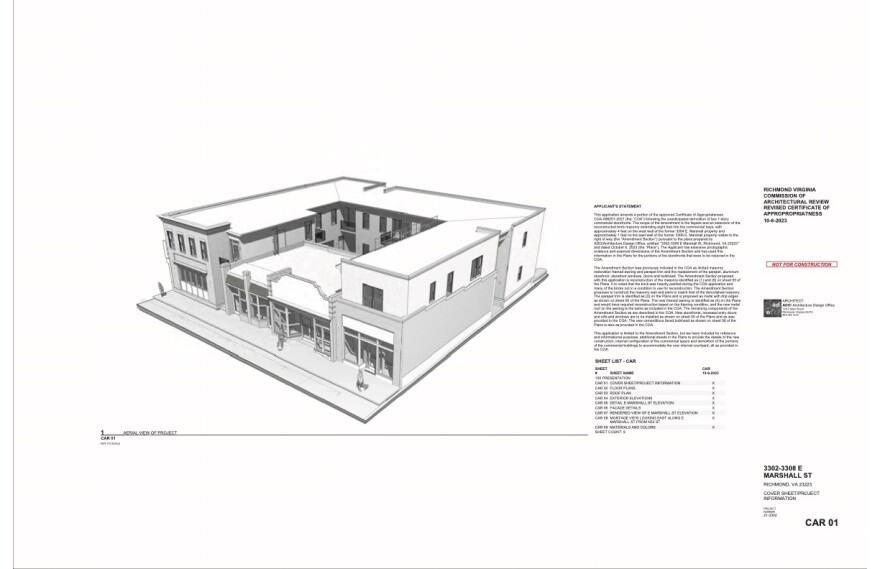The Richmond Commission of Architectural Review reluctantly approved the reconstruction of two historic storefronts this week that were illegally demolished in August.
City officials said no developer in recent, known history has torn down a historic building in Richmond without permission from the city. But not much can be done to rectify the razing or — as some argue — meaningfully penalize the developer.
The city fined C&M Properties $200 for pulling down the 100-plus-year-old storefronts at 3304 and 3306 E. Marshall St. after issuing a stop-work order. The one-story buildings were previously occupied by local businesses, Jade Multicultural Salon and a gym called CrossFit Prelude.
They were located in the Oakwood-Chimborazo National Register Historic District. Construction in that zone requires a Certificate of Appropriateness from CAR, which is the city’s official historic preservation body.
CAR previously approved C&M’s design for a mixed-use commercial and residential building in 2021 and issued a building permit for the project in May — provided the developer preserve and rehabilitate the historic storefronts.
But on Aug. 28 and 29 of this year, Church Hill residents woke to the sound of those facades coming down.
“There was no attempt to brace the facades in order to maintain and restore them,” said nearby resident Blythe King. “Clearly, the developers did not abide by the agreement and the certificate of appropriateness.”

She told commissioners they should not retroactively issue a new certificate for “bad-faith work.”
C&M partner Casey White said in a previous interview with VPM News that the company did not intend to demolish the structures, but ran into unexpected problems.
“[W]e weren’t going to risk the building potentially collapsing,” he said.
Kevin Vonck, director of the city’s Planning & Development Review department, said in September, to the city’s knowledge, the storefronts had no structural issues.
“If the contractor encountered a safety concern during demolition, then he/she should have contacted the Commissioner of Buildings to request an inspection and permission to deviate from the permit to address an emergency safety concern,” Vonck wrote in an email at the time.
Jennifer Mullen, an attorney for the company, reiterated Tuesday that no one had “mal intent” in the demolition, but that contractors failed to properly communicate with the city when structural issues were discovered.
Cyane Crump, executive director of Historic Richmond, called the situation a “huge mess.”
“The neighborhood’s mad. We’re mad. The developer is very disappointed,” Crump said. “The challenge is trying to figure out a way out of this mess by producing good development for the neighborhood and by not creating any perverse incentives for strategic demolitions without approval in [Richmond’s] Old and Historic districts.”
Crump warned against denying the developer’s proposal, which C&M was forced to reintroduce as a result of the illegal demolition. That would mean rejecting a project that was previously approved after months of compromise among CAR, the neighborhood and developers.
“It might not be this project that comes back,” she said. “It might be something much worse, because by wiping the slate clean, you are likely to get something more dense and less sympathetic to the historic streetscape that was once here.”
CAR members repeated Crump’s concerns about setting a bad precedent for future developers.
“Since there is no enforcement mechanism, there’s no penalties beyond what we’ve already talked about and there's no punishment mechanism at this point. I feel like the next best thing is to try to get the best project that we can,” said the commission’s vice chairperson, Andrew Moore. “And I think as submitted, it’s OK.”
Staff recommended the salvaged brick be incorporated into the project or used to commemorate the lost buildings in some other way.
Moore jokingly suggested the “developer should be required to grind up the bricks and eat them.”



